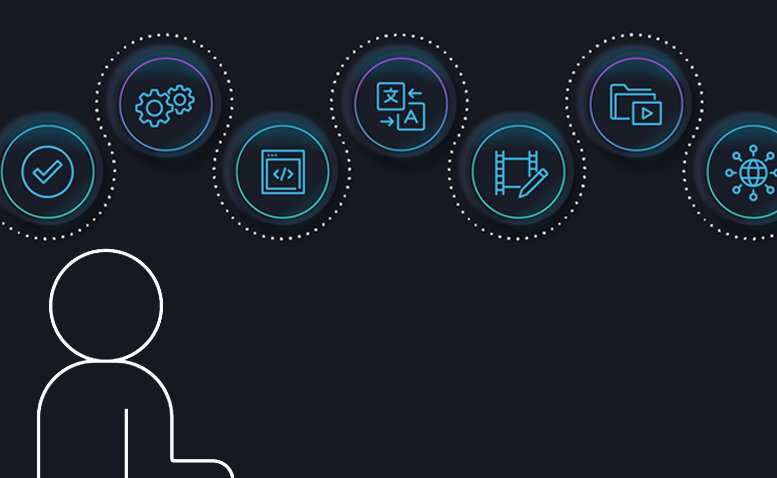
Content now moves across borders and platforms with incredible speed, and media supply chains are evolving accordingly. Over the past few years, we’ve seen media organizations make real progress in building smart, efficient “factories” that automate the ingest, transformation, and packaging of content for broader distribution.
If you saw my post, “The Incredible Shrinking World for Media,” from last month, then you know that I believe supply chain optimization has to extend beyond these “factory” walls and across the boundaries between companies. For any factory, even a highly optimized factory, most of the pain and cost are evident at the edges — the loading docks, if you will — as one partner hands content off to another. That’s why it’s so important to extend automation to the points at which content actually changes hands.
Where Friction Lives
The edges of the supply chain are where you find friction in the form of duplicated effort and the need to deal with missed specifications, manual corrections, and rejected deliveries. In practical terms, this might be a partner repeating QC processes because it doesn’t have the visibility to know what has been done already. It may be re-entry or reformatting of metadata, even when the sender has already provided that information. Or perhaps content is repackaged entirely, not because the original work was bad or wrong, but because the recipient just couldn’t confirm that it met required specifications.
This friction at the handoff wastes time, introduces errors, and increases cost. These issues are magnified as the number of endpoints increases. Whether you’re addressing new platforms, new languages, or just different delivery formats, your inefficiency multiplies.
Why Standardization Isn’t the Answer
The industry has long chased the dream of a single standard metadata schema or universal packaging format. But we’re just not getting there. Every time a new “standard” emerges, it tends to add to the pile rather than replace what’s already in use.
Even when platforms do provide clear specs, real-world delivery rarely plays out the same way twice. Some destinations enforce strict compliance while others offer specs but make exceptions for different partners. A one-size-fits-all approach just isn’t feasible or realistic. But there is another solution ….
Destination-Aware Processing
 Rather than try to enforce sameness, we need to work with systems that are intelligent and sophisticated enough to deal with difference. That means building destination-aware workflows and systems that understand where the content is going and what that destination expects.
Rather than try to enforce sameness, we need to work with systems that are intelligent and sophisticated enough to deal with difference. That means building destination-aware workflows and systems that understand where the content is going and what that destination expects.
What does that involve, exactly? A truly destination-aware system knows what metadata schema is required, which QC checks need to be performed, how audio tracks should be delivered, whether captions need to be embedded or delivered as a sidecar, and so on. It starts with the endpoint requirements and works backward to make sure the delivery package is complete and correct before it ever leaves one dock for the next.
That’s how you eliminate friction: not by asking your partners to conform to your standards, but by delivering content in a way that already fits theirs.
Building Trust Through Consistency
 When destinations receive a file, they can’t just hope it matches their requirements. They need to know that it does. The delivery therefore must include the asset itself, as well as supporting documentation including metadata, QC reports, and clear evidence of what was done to prepare the content.
When destinations receive a file, they can’t just hope it matches their requirements. They need to know that it does. The delivery therefore must include the asset itself, as well as supporting documentation including metadata, QC reports, and clear evidence of what was done to prepare the content.
Automation plays an important role in building this trust. By making media logistics repeatable and predictable, automation helps ensure that content is delivered quickly and accurately every time. When the right transformations, QC steps, and metadata validations are applied consistently across deliveries, destinations gain confidence that the handoff will meet their expectations. And the more often that happens, the more partners come to trust the process and rely on the accuracy of upstream work.
Visibility in this context goes beyond identifying the location of a file or its status in the workflow. It offers insight into the transformations that were applied, the validations that were passed, and the checks that were run. And with this deeper understanding of the work performed, and its results, downstream partners can trust that they don’t need to redo or replicate those jobs.
Making Work Count
Work that gets duplicated — whether due to error or a lack of visibility into upstream processes —might be considered part of the cost of doing business. But it can add up fast. Captioning or localization mistakes, for instance, can cost thousands of dollars to fix. Even a single rejected file can result in missed deadlines and extra operational expense.
In an interconnected media supply chain, systems within the content factory can recognize what the destination requires, translate content and metadata accordingly, and pass along documentation to prove it’s all been done. Today, most media companies outsource this layer of the process, with a third party handling (often manually) everything from spec compliance to file and metadata delivery. But why spend more on external packaging and delivery than you’ve spent on automating your internal media factory?
I’ll tackle that question in my next blog, taking a closer look at the economics of package delivery and what happens when you bring it in-house with automation. More specifically, we’ll look at how you might turn this layer of your supply chain into a competitive advantage. Because eliminating friction is only part of the equation. The bigger opportunity lies in transforming how the work gets done.
If you’re looking to reduce friction in your media supply chain, get in touch! We’d be happy to talk through what that might look like for your business.


